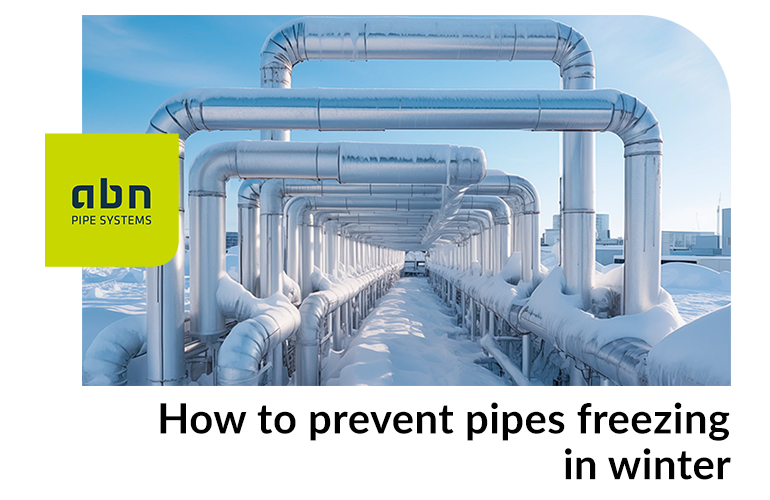Winter temperatures can pose a challenge to the condition of pipes, especially those located outdoors. From interruption of the water supply to burst pipes, the consequences of frozen pipes lead to service and sometimes also cost problems.
Outdoor pipes are particularly prone to this risk due to direct exposure to cold. Understanding the risks is the first step in implementing effective preventive measures.
Importance of insulation in outdoor piping
Polypropylene pipes are widely recognised for their durability and strength. However, even the most robust materials can face significant challenges when it comes to low winter temperatures. It is in this context that the importance of insulation in external piping becomes crucial for the maintenance and protection of these systems.
- Increases pipe life: Insulation acts as a heat shield, preventing pipes from coming into direct contact with extreme cold and maintaining their structural integrity throughout the winter seasons.
- Prevents freezing and its consequences: Insulation, by maintaining a more constant temperature around pipes, acts as a protective shield against this threat, drastically reducing the risk of freezing and thus the associated costly damage.
- Ensures optimal performance over time: By protecting pipes from extreme temperature fluctuations, it also helps to maintain a constant flow of water, preventing blockages and pressure losses that could negatively affect the overall performance of the system.
- Savings and sustainability: By preventing freezing and subsequent leakage, repair costs are reduced and unnecessary water losses are avoided, thus contributing to the sustainability of the water resource and long-term financial savings.
Freezing risks in external pipelines
Freezing not only creates internal pressure in the pipes, but can also lead to costly damage, even affecting the functionality of the entire hydraulic system. It is in this season that the need for good preventive maintenance becomes evident.
It is essential to be alert to signs of frozen pipes. If unusual sounds are heard in the water installation or an irregular flow of water is evident through the taps, it is likely that a part of the pipe is frozen. Addressing these early signs can prevent further damage and costly repairs.
The three main causes of frozen pipes are:
- Sudden drop in temperature: When temperatures drop rapidly, the water inside the pipes can freeze, generating considerable internal pressure. This increased pressure can result in burst pipes, which in turn can lead to flooding and costly repairs.
- Poor insulation: The openings through which the pipes pass through walls or floors are critical points that allow cold air to penetrate and affect the internal temperature of the pipes. Without proper insulation, pipes are vulnerable to freezing, exponentially increasing the risk of damage.
- Thermostat set too low: If the ambient temperature remains below freezing point, the water in the pipes may solidify. Setting the thermostat to a higher temperature, especially during colder nights, helps to keep pipes safe from temperature extremes.
Recommendations to prevent frozen pipes
Although most of the elements that channel water are out of our reach, there are some habits that can prevent frozen pipes.
- Avoid stagnation of water and close the flow in extreme conditions. When temperatures drop drastically, closing the stopcock and emptying the pipes is essential. This step prevents water from accumulating in the pipes, thus reducing the risk of freezing and bursting.
- Seal gaps around penetration holes. Holes where pipes pass through walls or floors are critical points. Putty or foam insulation can be used to seal these gaps, both inside and outside, preventing cold air from entering and keeping the heat in.
- Adequately insulate unprotected areas. Piping in basements, attics or other unprotected areas may need additional insulation. Foam rubber or fibreglass covers help to reduce the chances of freezing and ensure a suitable thermal environment.
- Maintain heating during periods of prolonged absence. During prolonged absences, keeping the heating on at a moderate level is essential. This residual heat is sufficient to prevent pipes from freezing and subsequent damage.
- Installation of extreme temperature resistant or pre-insulated pipes. Opting for pipes specifically designed to withstand adverse weather conditions or pre-insulated ensures optimum performance.
Effective pipe insulation is essential to protect buildings from the ravages of winter cold. Implementing the recommendations, and making the right product choice, not only preserves the integrity of the pipes, but also provides peace of mind and saves on maintenance and repair costs.
